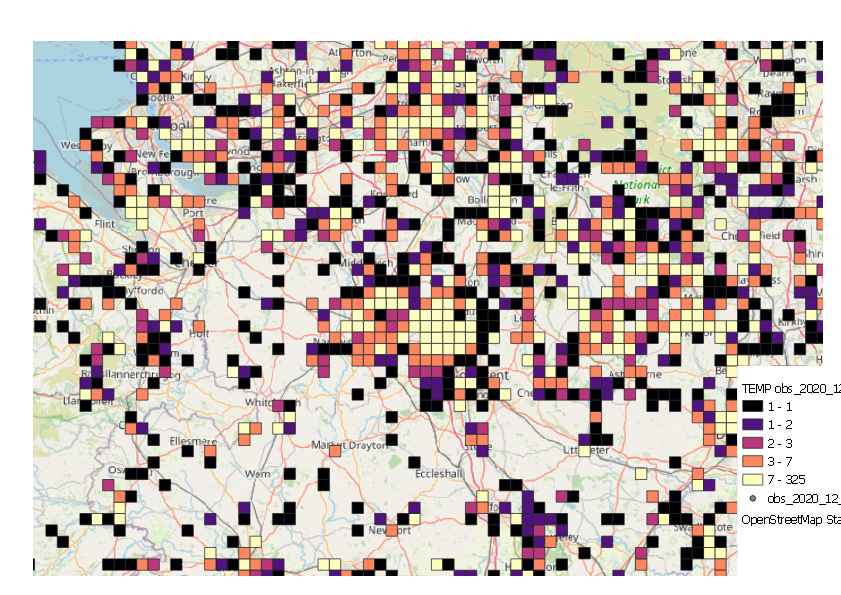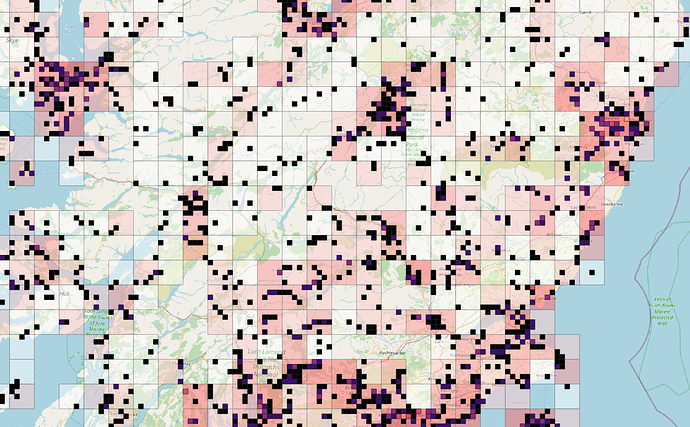The December issue of British and Irish Botany has an article on cooccurring plant species, with one group being the ubiquitous species. There is a list of the 30 most widespread (by count of tetrads) species in Cambridgeshire, so I’m taking the opportunity to compare this with my records from Cheshire. (I don’t cover the whole of Cheshire; I’ve recorded in around 280 tetrads, with a core of around 60.)
The Cambridgeshire species are
- Achillea millefolium
- Anisantha sterilis
- Anthriscus sylvestris
- Arrhenatherum elatius
- Capsella bursa-pastoris
- Cirsium arvense
- Cirsium vulgare
- Convolvulus arvensis
- Crataegus monogyna
- Dactylis glomerata
- Elytrigia repens
- Galium aparine
- Glechoma hederacea
- Helminthotheca echioides
- Heracleum sphondylium
- Jacobaea vulgaris
- Lamium album
- Lolium perenne
- Malva sylvestris
- Plantago lanceolata
- Plantago major
- Poa annua
- Potentilla reptans
- Ranunculus repens
- Rumex obtusifolius
- Sambucus nigra
- Senecio vulgaris
- Sonchus asper
- Taraxacum agg.
- Urtica dioica
The Cheshire species are
- Acer pseudoplatanus
- Achillea millefolium
- Alliaria petiolata
- Anthriscus sylvestris
- Bellis perennis
- Centaurea nigra
- Cirsium arvense
- Cirsium vulgare
- Dactylis glomerata
- Dryopteris filix-mas
- Epilobium hirsutum
- Fraxinus excelsior
- Galium aparine
- Geranium robertianum
- Geum urbanum
- Hedera helix agg.
- Heracleum sphondylium
- Ilex aquifolium
- Jacobaea vulgaris
- Plantago lanceolata
- Plantago major
- Quercus robur
- Ranunculus repens
- Rubus fruticosus agg.
- Rumex obtusifolius
- Sambucus nigra
- Senecio vulgaris
- Sonchus asper
- Taraxacum agg.
- Urtica dioica
17 taxa are in both lists: Achillea millifolium, Anthriscus sylvestris, Arrhenatherum elatius, Cirsium arvense, Cirsium vulgare, Dactylis glomerata, Galium aparine, Heracleum sphondylium, Jacobaea vulgaris, Plantago lanceolata, Plantago major, Ranunculus repens, Rumex obtusifolius, Sambucus nigra, Senecio vulgaris, Sonchus asper, Taraxacum agg. and Urtica dioica.
Those only in the Cambridgeshire list are Anisantha sterilis, Capsella bursa-pastoris, Convolvulus arvensis, Crataegus monogyna, Elytrigia repens, Glechoma hederacea, Helminthotheca echioides, Lamium album, Lolium perenne, Malva sylvestris, Poa annua and Potentilla reptans.
Those only in the Cheshire list are Acer pseudoplatanus, Alliaria petiolata, Bellis perennis, Centaurea nigra, Dryopteris filix-mas, Epilobium hirsutum, Fraxinus excelsior, Geranium robertianum
Geum urbanum, Hedera helix agg., Quercus robur and Rubus fruticosus agg.
Some of the taxa not in both lists are still common in both counties; I think that while Cheshire is not a particularly well-wooded county it is more so that Cambridgeshire, and that results in the replacement of some grassland and arable species by some woodland species. Similarly Cheshire has a lot of pasture, so may have lower frequencies of arable species that Cambridgeshire.
Helminthotheca echioides is rare, but increasing, in Cheshire. Convolvulus arvensis is rare - but quite persistent on individual sites. Glechoma hederacea is a frequent element of the woodland ground flora, but is well short of ubiquitous. Lamium album, Malva sylvestris and Potentilla reptans are also reasonably frequent but not ubiquitous. Poa annua and Crataegus monogyna are just short of the top 30, with the others lying in between.
In the other direction, several of the taxa in the Cheshire list are not mentioned in the paper, but the only one that seems to be at all infrequent is Dryopteris filix-mas.


